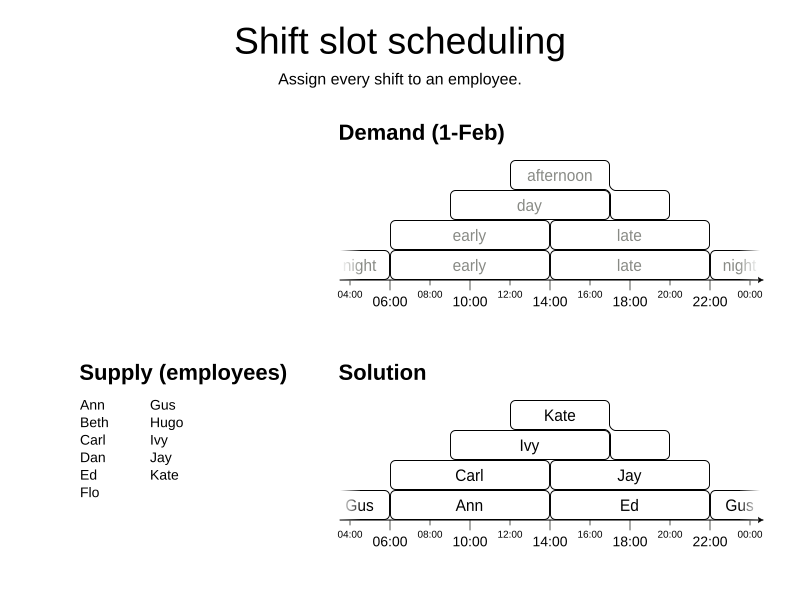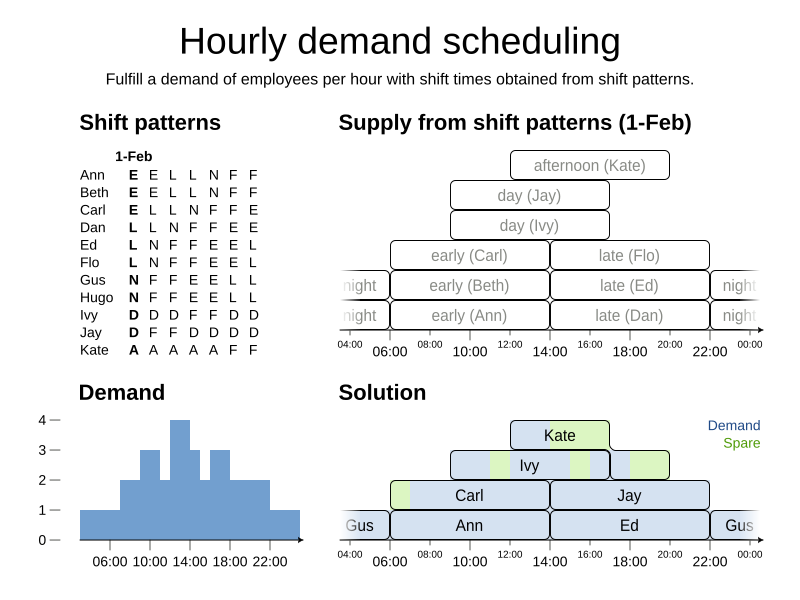Demand and supply
This model supports multiple ways to define the work demand:
-
Shift slot scheduling (default): The goal is to assign every shift to an employee. There is no demand curve.
-
Hourly demand scheduling: The goal is to fulfill the hourly demand curve, by assigning a part of the input shifts to an employee. The other shifts will naturally remain unassigned.
-
A combination of both.
1. Shift slot scheduling
Input the work demand as shifts that require an employee. The solver assigns every shift to an employee.

Overconstrained scheduling: If it is impossible to assign every shift to an employee without breaking hard constraints, due to a shortage of available employees, some shifts remain unassigned and the score breaks medium constraints.
2. Hourly demand scheduling
Input the work demand as number of required of employees per hour. The solver selects a subset of the shifts to assign to an employee to fulfill the demand curve.

Overconstrained scheduling: If it is impossible to meet the hourly demand without breaking hard constraints, due to a shortage of available employees, the hourly demand isn’t entirely met and the score breaks medium constraints.